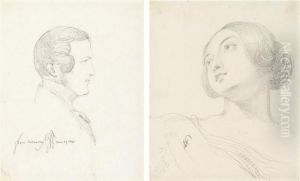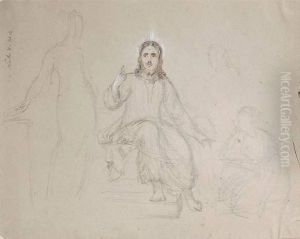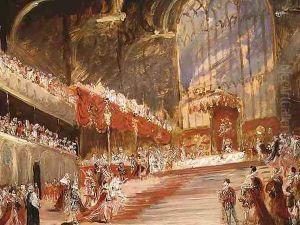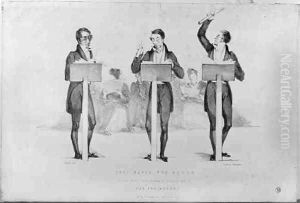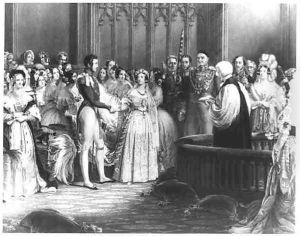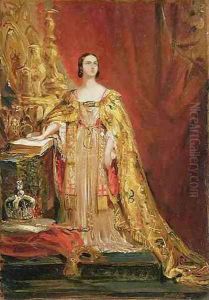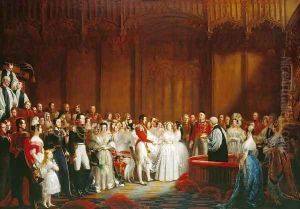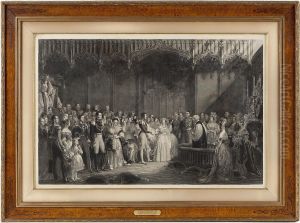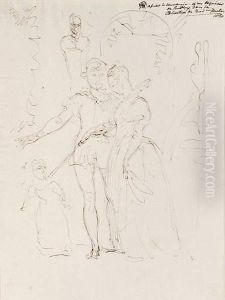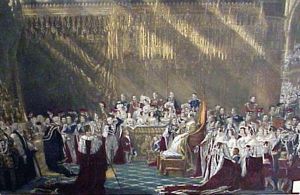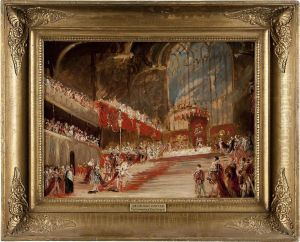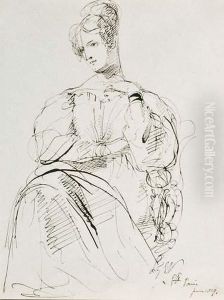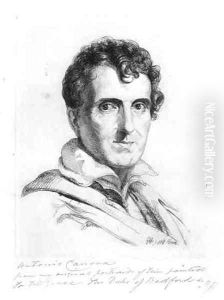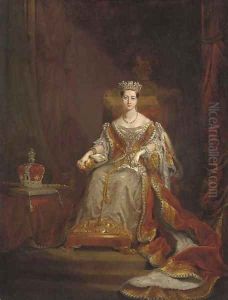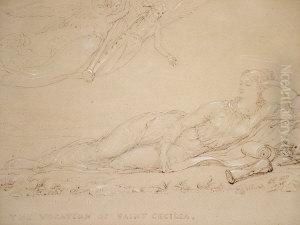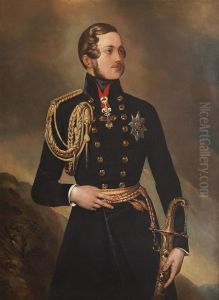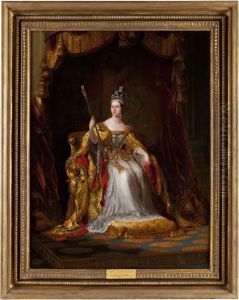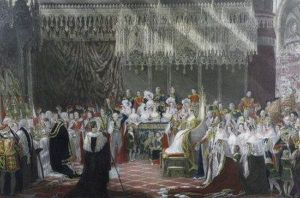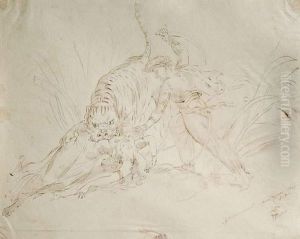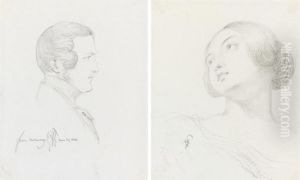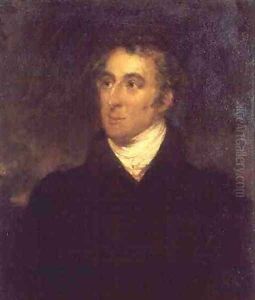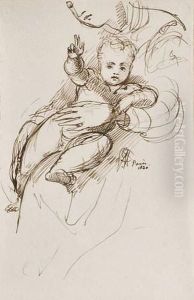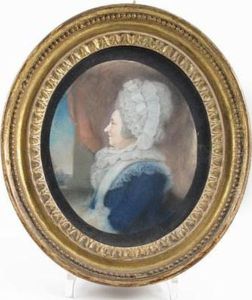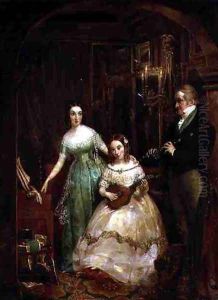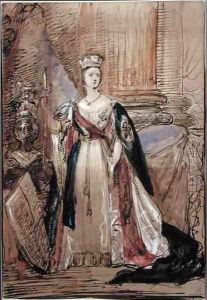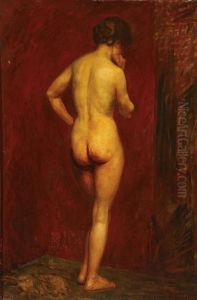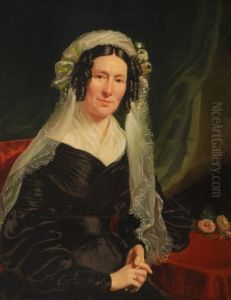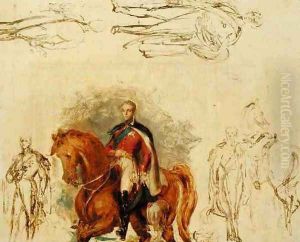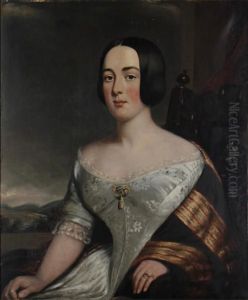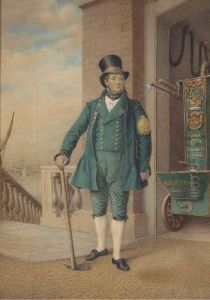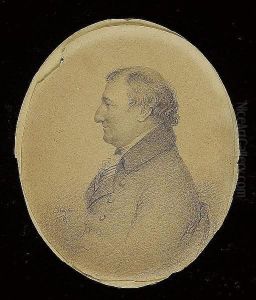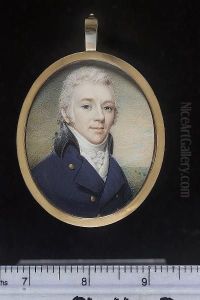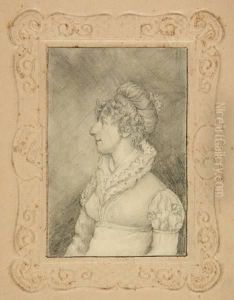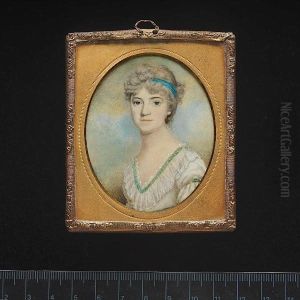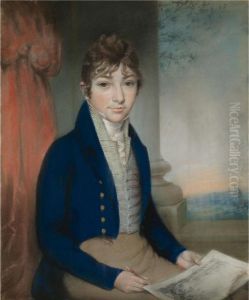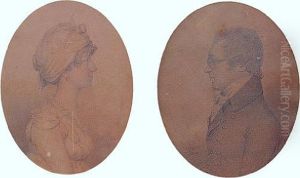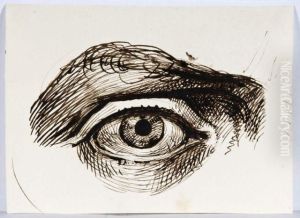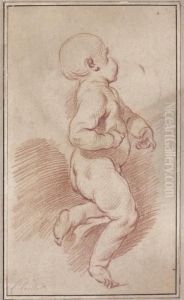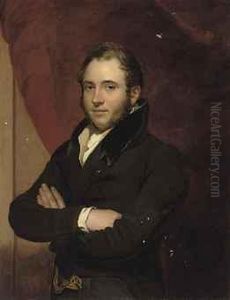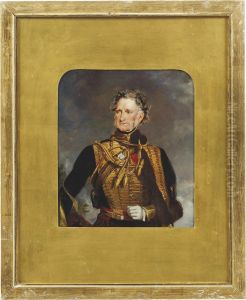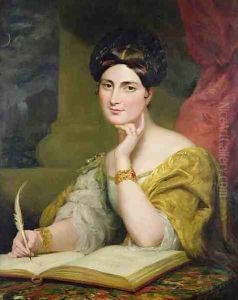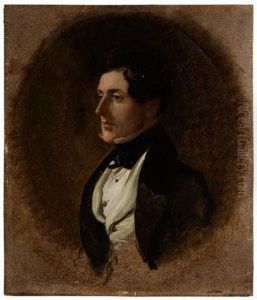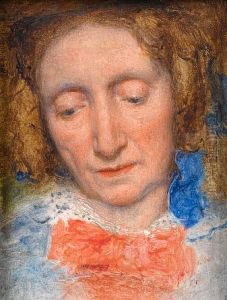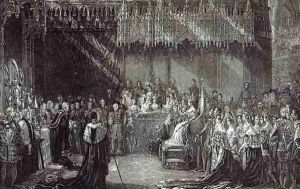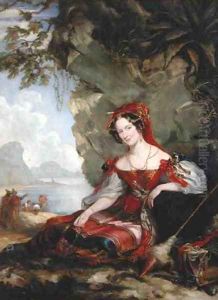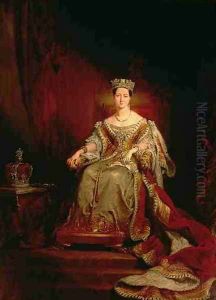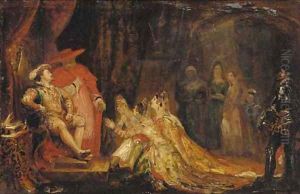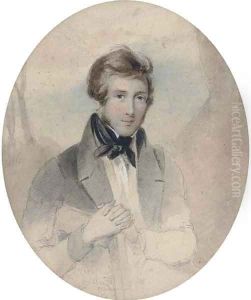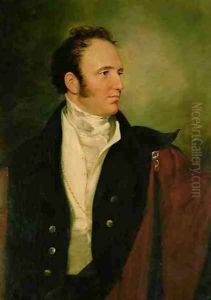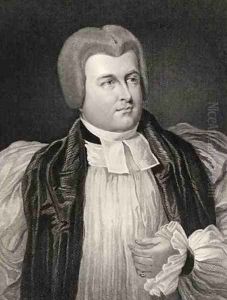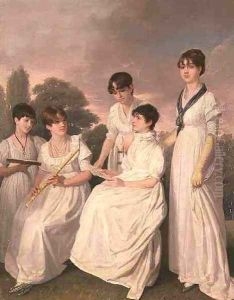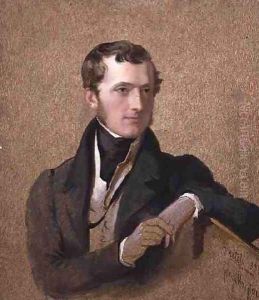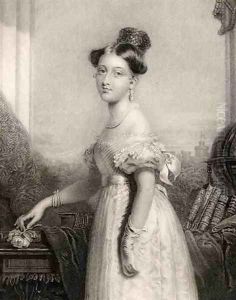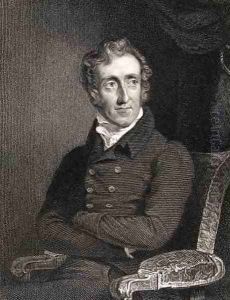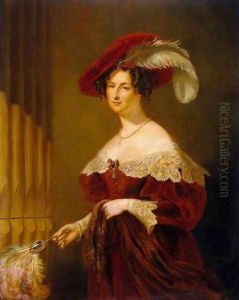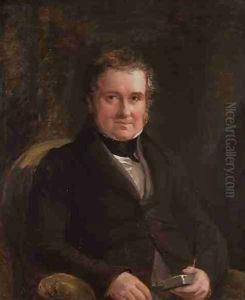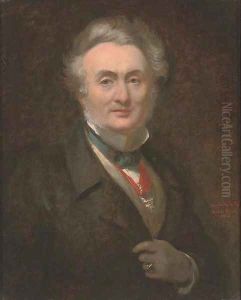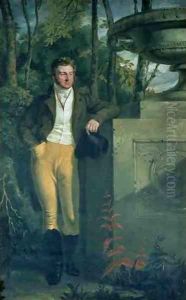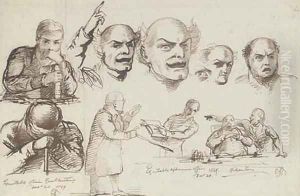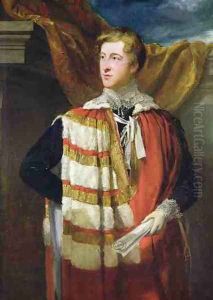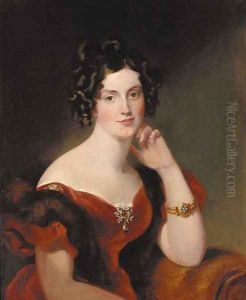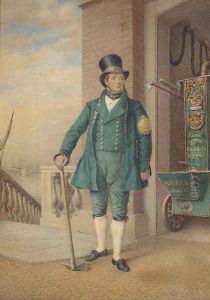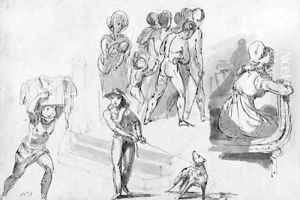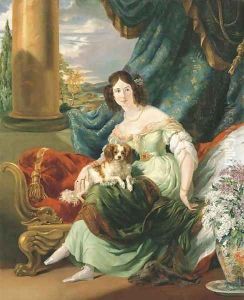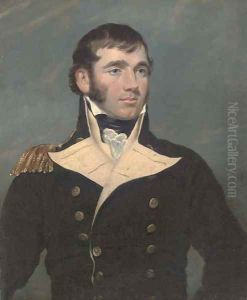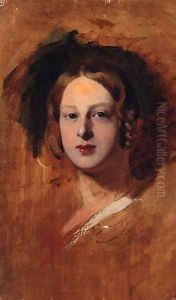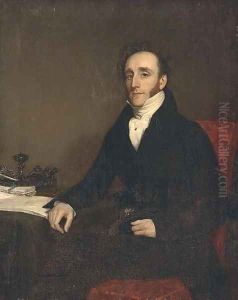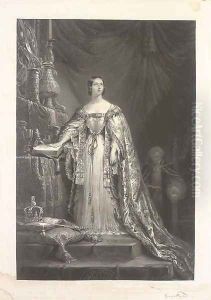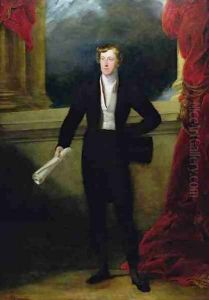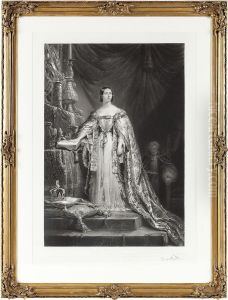Sir George Hayter Paintings
Sir George Hayter was a notable English painter, specialising in portraits and large historical pieces. Born in London on December 17, 1792, into a family with a strong artistic background, his father, Charles Hayter, was a respected miniaturist and drawing master to Princess Charlotte and Queen Charlotte. This environment undoubtedly influenced George's early interest in art, leading him to pursue a career that would eventually earn him significant recognition in the British art scene.
George Hayter showed prodigious talent from an early age. At the age of just 16, he won a prestigious silver medal from the Royal Academy for a drawing of a classical figure, marking the beginning of a long and illustrious career. Despite his father's reservations, Hayter enrolled in the Royal Academy schools in 1808 and quickly established himself as a gifted portraitist and historical painter.
In 1815, he traveled to Italy, where he spent several years studying the masterpieces of the Renaissance and antiquity. This period was crucial for his artistic development; he honed his skills in drawing and painting, absorbed the Italianate influence, and cultivated a style that blended classical elegance with a keen eye for contemporary detail. His time in Italy also allowed him to mingle with influential artists and patrons, expanding his network and reputation across Europe.
Upon returning to England, Hayter found favor with the British royal family, becoming Principal Painter in Ordinary to Queen Victoria—a position that significantly boosted his career. He painted many portraits of the royal family and designed the famous Coronation Portrait of Queen Victoria, which earned him widespread acclaim. His ability to capture the likeness and character of his subjects made him a sought-after portraitist among the aristocracy and upper classes.
Beyond portraiture, Hayter was also known for his historical and literary paintings, which were characterized by their ambitious scale and dramatic intensity. He was adept at handling complex compositions, and his works often featured a rich use of color and meticulous attention to detail.
Despite his success, Hayter's relationship with the Royal Academy was complex. He was elected an associate member in 1826 but had to wait until 1864 to become a full member, a recognition many believe was long overdue. His frustration with the Academy's politics did not hinder his productivity or creativity; throughout his career, Hayter remained a prolific artist, contributing significantly to the British art scene of the 19th century.
Sir George Hayter died on January 18, 1871. His legacy is that of a versatile and dedicated artist who navigated the complexities of the art world with skill and determination. His works remain an important part of British art history, celebrated for their technical proficiency, emotional depth, and visual impact.
